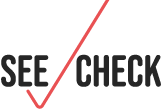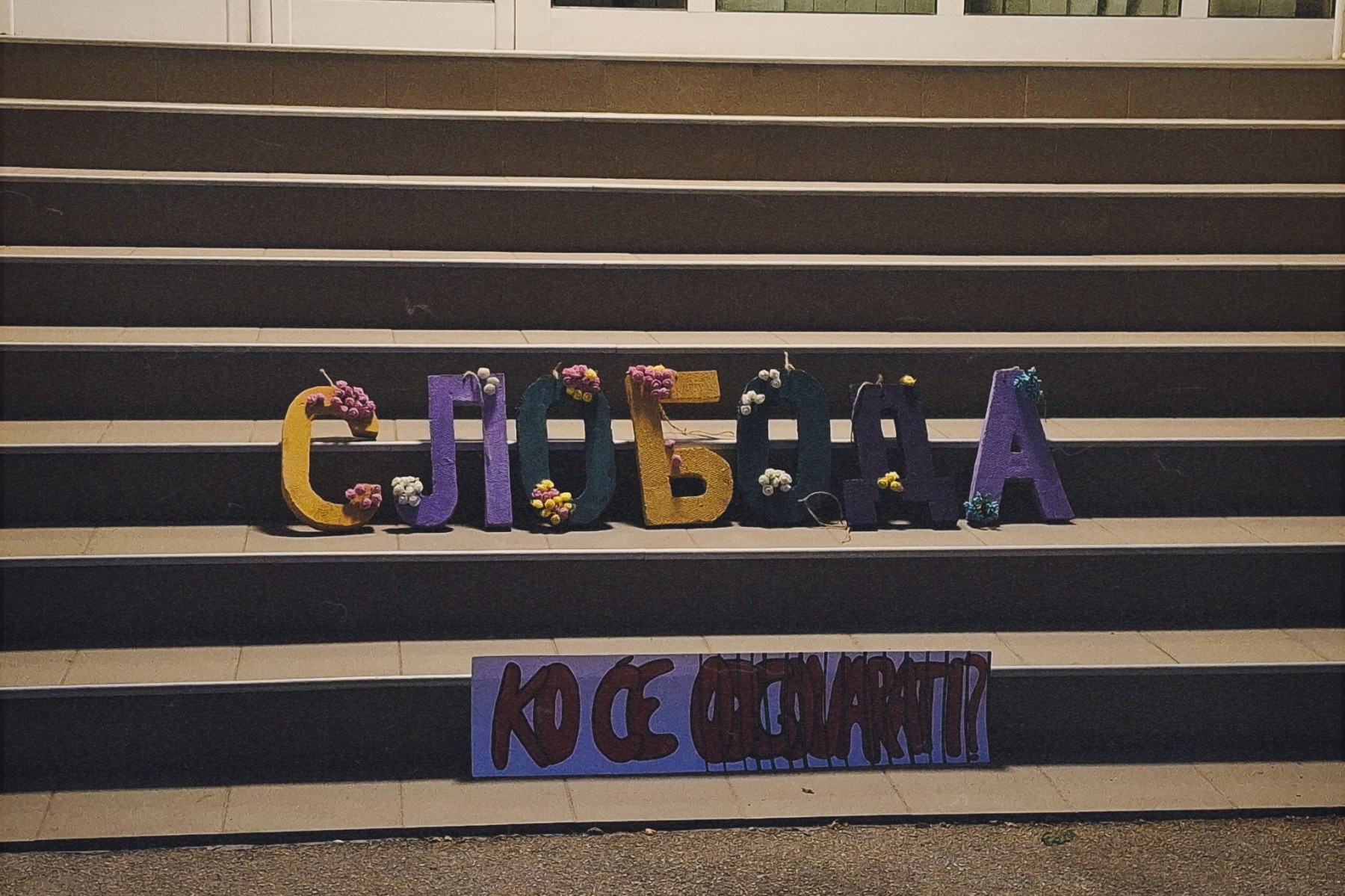Original article (in Serbian) was published on 13/6/2025; Author: Milica Ljubičić
The recently held local elections in Kosjeric and Zajecar, in which the Serbian Progressive Party (SNS) officially won the majority of votes, served as an opportunity for Alo to once again declare the ruling party’s victory over the so-called colored revolution, which they claim is “directed from abroad”. This pro-government tabloid alleges that, following the opposition’s defeat in Kosjeric and Zajecar, “the masters of the colored revolution ordered chaos”, claiming it’s the only way for them to gain power. Besides relying only on “anonymous sources” to support these claims, Alo illustrated the alleged “chaos” with photographs unrelated to Serbia – some originating from Georgia or even being artificially generated.
The pro-government tabloid Alo, even after months of university blockades that students say were self-organized, continues to claim the opposite, that they were directed from abroad and are part of a “colored revolution”. The same claim has been made multiple times by the President of Serbia, Aleksandar Vucic, who in March 2025 announced that he would write a book titled “How I defeated the colored revolution”.
This is, in fact, one of the most common “arguments” used by the government and pro-government media during major protests that have taken place in Serbia in recent years.
Thus, the recent local elections in Kosjeric and Zajecar became another occasion to celebrate Vucic’s supposed victory over the “colored revolution”.
Although these were regular local elections, they attracted public attention because they were the first elections held in Serbia after the collapse of a canopy in Novi Sad. Additionally, they took place amid calls for national parliamentary elections, as the government still hasn’t met the demands of the protesting students.
After the elections ended in Kosjeric and Zajecar, both SNS and the opposition declared victory.
Pro-government tabloids wrote about the ruling party’s victory, while Informer labelled citizens who protested that day over suspected electoral fraud as “fascists”. Alo had already claimed on June 9 that the people had voted “against the colored revolution”, echoing a statement previously made by President Vucic.
The author of the article in Alo claims that “the sponsors of the colored revolution are primarily foreign actors, enraged after the elections in Zajecar and Kosjeric.”
“The order from the masters of the colored revolution: create chaos”, Alo states, citing unspecified “intelligence” without providing any credible sources.
What happened on Sunday during the elections in Kosjeric and Zajecar?
According to official results from the Republic Electoral Commission (RIK), the Serbian Progressive Party (SNS) received more votes in both Kosjeric and Zajecar, though the margin was very narrow in Kosjeric, where the ruling party had only 51 votes more than the opposition list United for Kosjeric. Opposition lists from both towns declared victory after the polls closed, followed later by Aleksandar Vucic declaring victory as well. Objections were then submitted to the respective election commissions, and a decision is now pending on whether the elections will be repeated at polling stations where the opposition reported irregularities.
Election day in Kosjeric and Zajecar was tense and uncertain. Citizens, bikers, and war veterans gathered outside polling stations to prevent irregularities. Voter turnout was high in both municipalities.
For example, throughout election day in Kosjeric, citizens gathered at locations where they had received information about potential vote-buying for the SNS. The observation mission CRTA also reported electoral irregularities in both municipalities.
What is a colored revolution?
“Colored revolutions”, as explained by BBC na srpskom, are symbolically named after the flowers used by protesters during non-violent demonstrations aimed at overthrowing undemocratic regimes – with varying degrees of success. These revolutions occurred in the early 21st century and led to regime changes in Kyrgyzstan, Georgia, and Ukraine.
Illustrating “chaos” with artificially generated images, not from Serbia
The tabloid illustrated the article with images of broken shop windows, scuffles with riot police, and protesters wearing gas masks, aiming to support the article’s narrative that the current protests are violent and will escalate even further. However, the images used were artificially generated and not taken in Serbia.
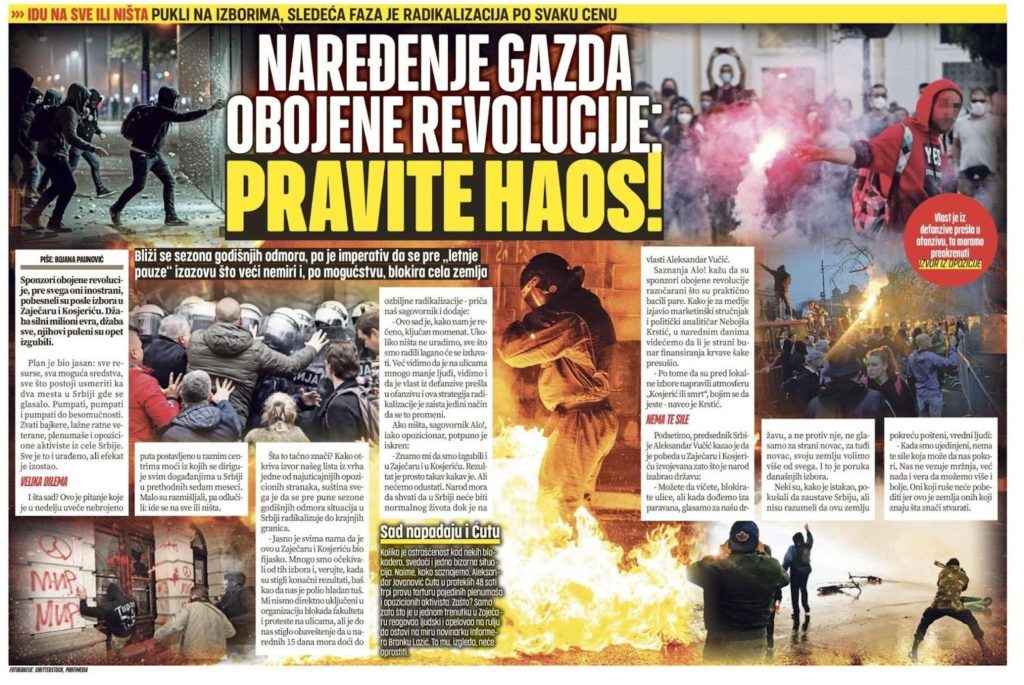
However, some of the photos used do not depict the current protests in the streets of Serbia, and some were not even taken in Serbia.
For example, the image in the top left corner, showing several men in dark clothing with hoods covering their faces, is a stock photo. It was generated using artificial intelligence and is commonly used to illustrate protests. The photo has no connection to Serbia.
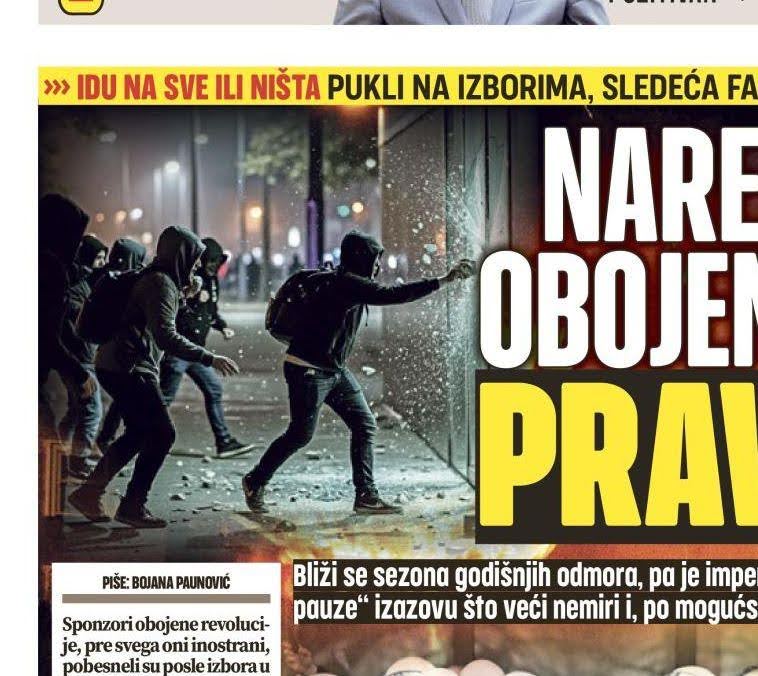
The photo in the top right corner, showing a young man in a red hoodie holding a flare, was most likely taken in Serbia, but it is at least five years old. It dates back to 2020 and shows protests against the introduction of new COVID-19 measures in Serbia.
There is also a somewhat apocalyptic-looking photo in the bottom right corner, showing three men with their backs turned, appearing to be at a demonstration. This image was not taken in Serbia. It originates from Tbilisi, the capital of Georgia, and was captured during protests on December 1, 2024. It can be found on several stock photo websites.
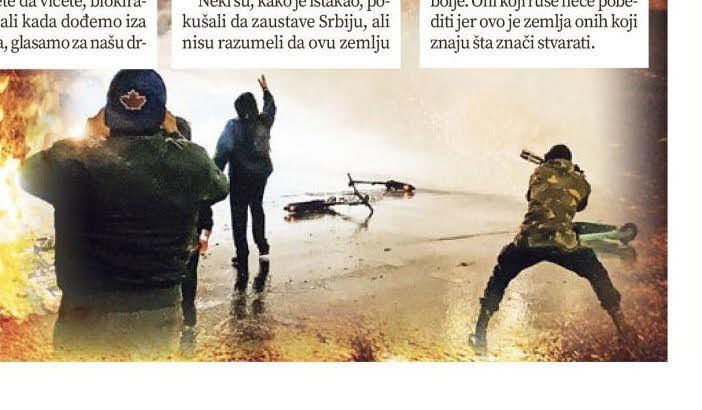
Although it was taken in Novi Sad, the photo in the bottom left corner is also not directly related to the current blockades. The image shows the appearance of the City Hall in Novi Sad, the day after mass protests in the city, which occurred following the collapse of a canopy at the Novi Sad train station that resulted in the deaths of 16 people. During those protests, the building was vandalized, but students at the time distanced themselves from such actions.
The central part of the article also features a large photo of a man wearing a gas mask with flames surrounding him. Journalists from Raskrikavanje were unable to determine when this photo was taken or whether it is authentic. However, its inclusion further reinforces the tabloid’s narrative that the protests are violent and that chaos is imminent.
